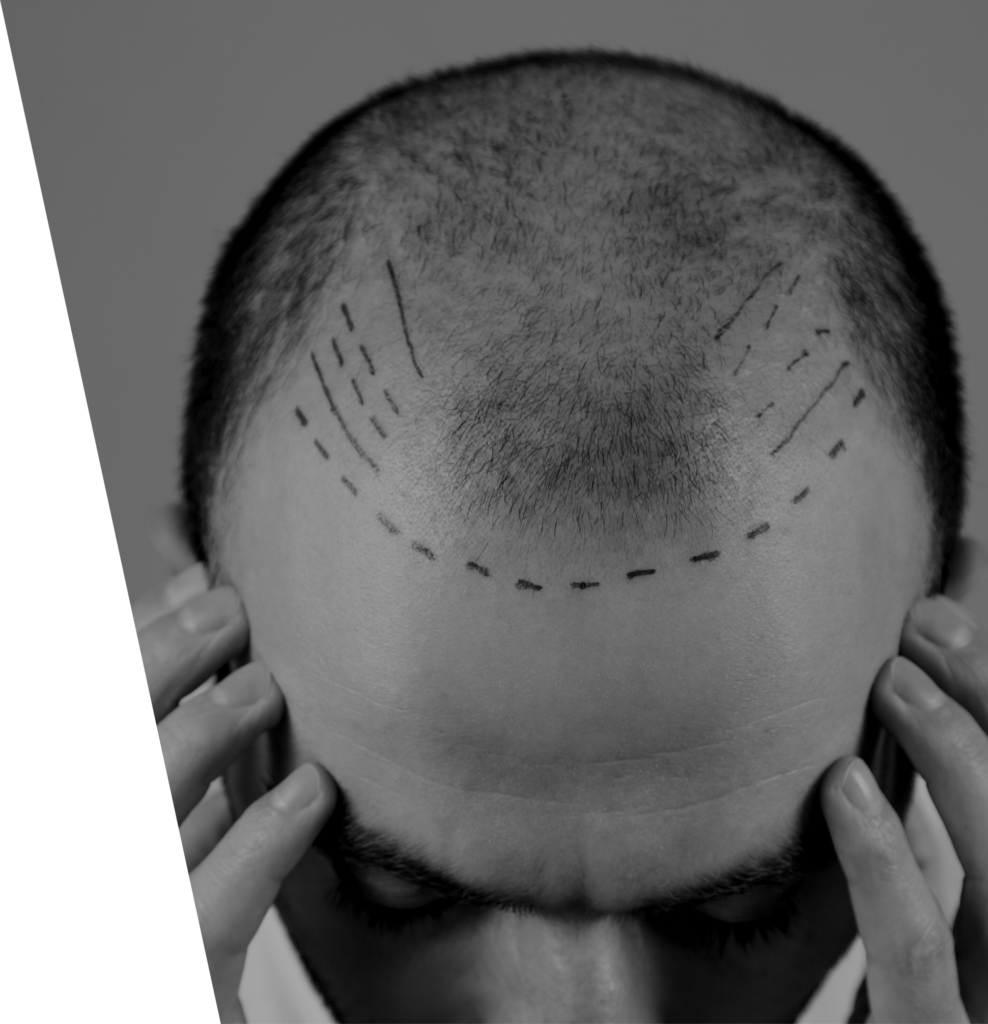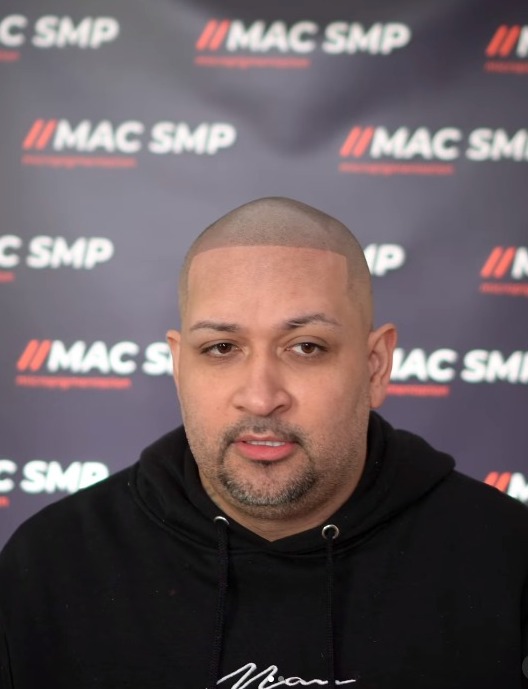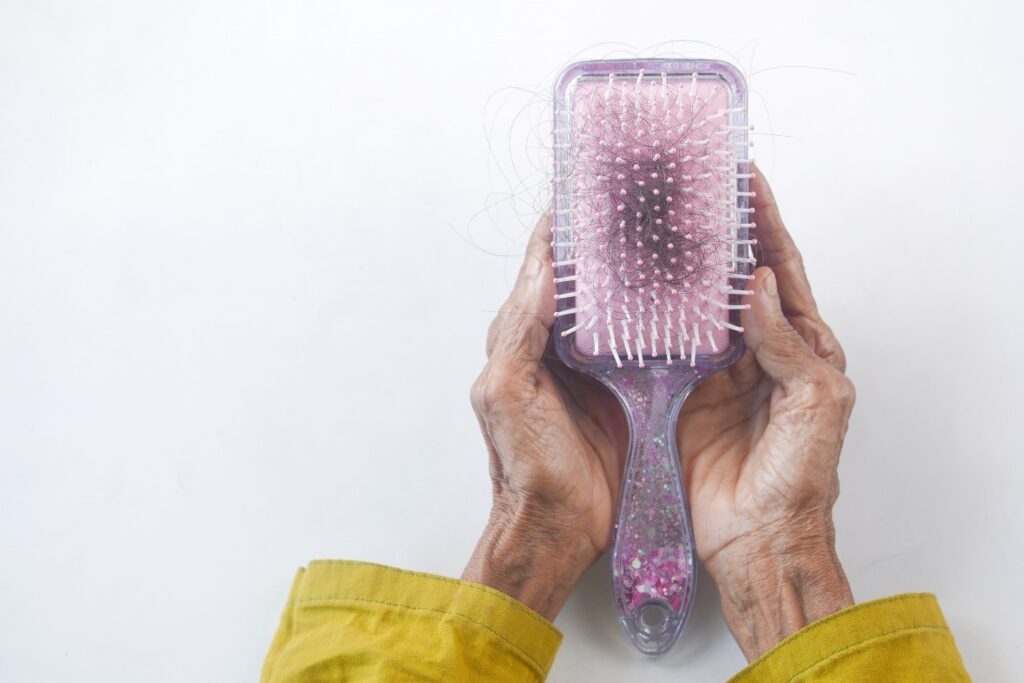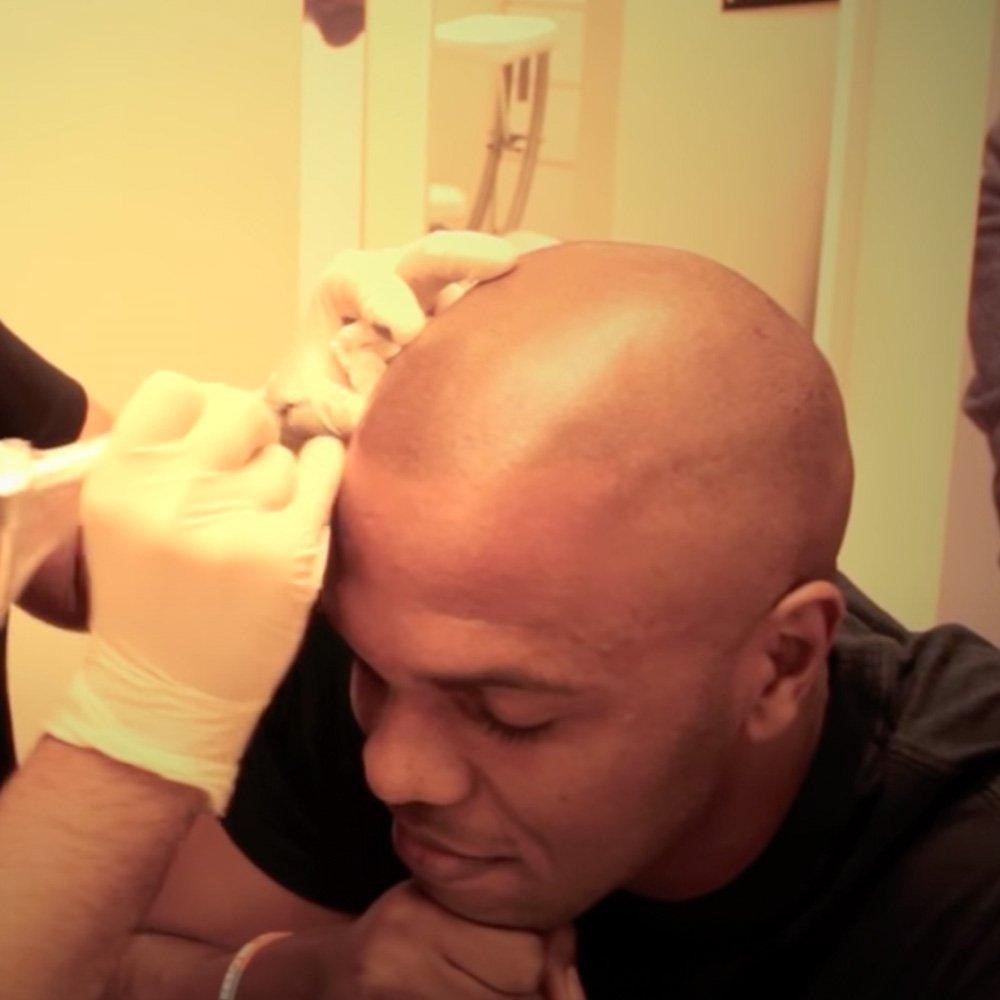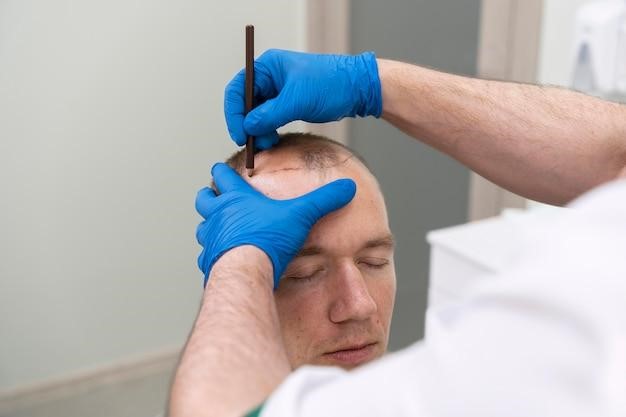Living in New York City, a hub of fashion and self-expression, can make even minor flaws feel magnified. Did you know that over 50 million men and 30 million women in the U.S. experience hair loss? Thinning hair or alopecia can impact your confidence and self-esteem, but a revolutionary solution is changing the game: Scalp Micropigmentation New York.
Mac SMP, your trusted provider of SMP in the heart of the city, offers a non-surgical, long-lasting solution for those struggling with hair loss. Whether you’re experiencing male or female pattern baldness, alopecia, thinning hairlines, or scarring, SMP can help you achieve a fuller, denser, and more youthful appearance.
Key Takeaway
Scalp micropigmentation offers a non-invasive, long-lasting, and confidence-boosting solution for hair loss concerns in New York City.
If you’re experiencing thinning hair, a receding hairline, alopecia, or scarring and are seeking a natural-looking and low-maintenance approach, then SMP is definitely worth exploring.
At Mac SMP, we provide free consultations to help you determine if SMP is the right choice for you and create a personalized treatment plan to achieve your desired results.
What is Scalp Micropigmentation?
SMP is a cosmetic procedure that utilizes microneedles to deposit tiny pigments into the scalp, creating the illusion of a densely shaved head or a fuller hairline. It’s not a hair transplant, but rather a visual solution that conceals areas of thinning hair, restores receded hairlines, and even camouflages scars caused by previous hair loss treatments.
Unlike wigs or hairpieces, SMP offers a semi-permanent, natural-looking, low-maintenance approach to hair loss.
Benefits of Scalp Micropigmentation New York
- Non-invasive and Painless: Unlike hair transplants, SMP requires no surgery or cutting, making it a safer and more comfortable option.
- Immediate Results: After just one session, you’ll see a noticeable difference in your hair density and hairline.
- Long-lasting Solution: With proper care, SMP results can last several years, requiring minimal touch-up sessions.
- Boosts Confidence and Self-Esteem: Addressing hair loss can significantly improve your confidence and self-image, making you feel more comfortable and outgoing.
- Versatile Application: SMP can address various types of hair loss, including thinning hair, receding hairlines, alopecia, and scar camouflage.
- Discrete and Natural-Looking: When performed by skilled artists, SMP results are virtually undetectable, offering a natural and seamless appearance.
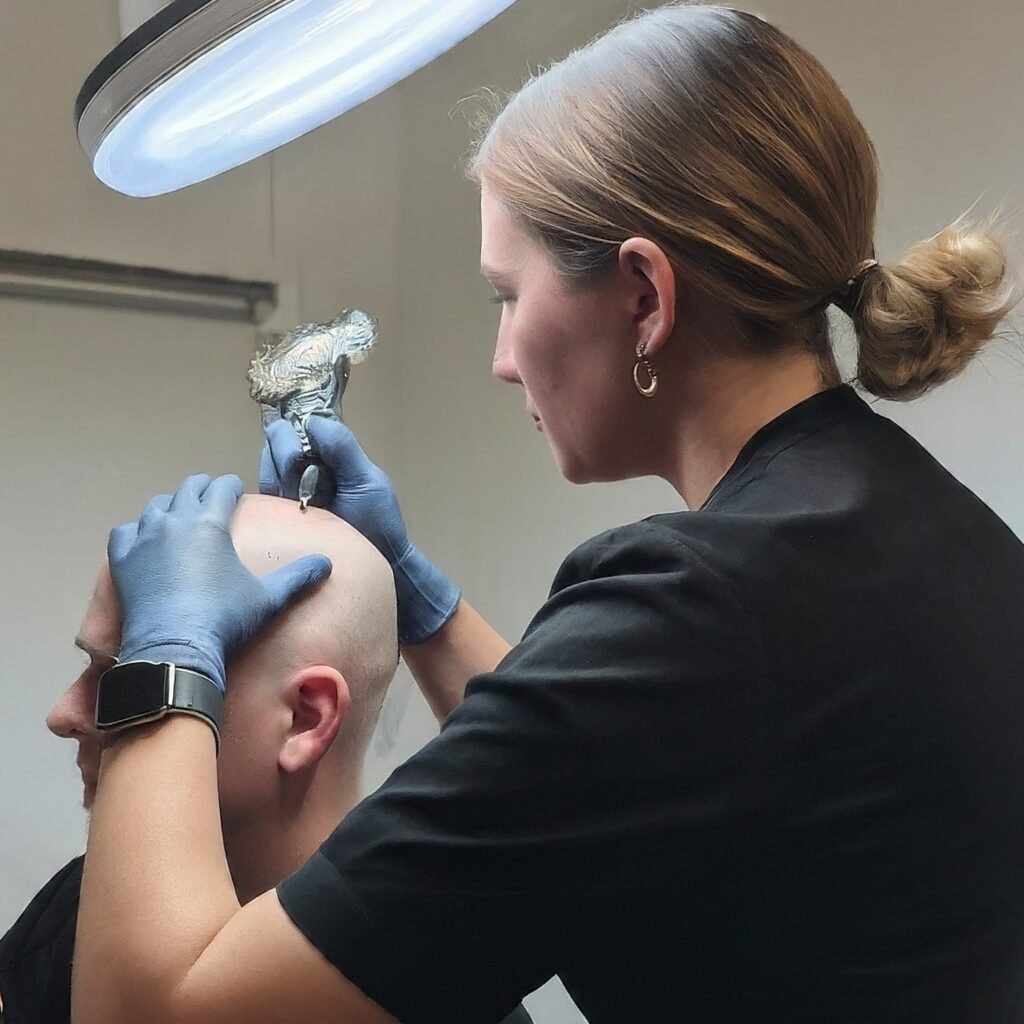
Comparative Analysis: SMP vs. Other Hair Loss Solutions
| Feature | Scalp Micropigmentation (SMP) | Hair Transplants | Wigs and Hairpieces | Topical Treatments |
|---|---|---|---|---|
| Procedure Type | Non-invasive | Invasive (surgery required) | External, non-invasive | External, non-invasive |
| Results Timeline | Immediate improvement | Variable, with potential for multiple surgeries | Immediate, but may need adjustment for a natural look | Delayed, can take months to see improvement |
| Maintenance | Low maintenance, occasional touch-ups | High maintenance, may require multiple surgeries and ongoing care | Regular replacement and special care | Daily application required |
| Cost | Generally more affordable | Expensive, includes surgical fees and multiple sessions | Variable, can be inexpensive to costly depending on quality | Variable, ongoing costs for continuous use |
| Appearance | Natural-looking, blends with existing hair | Variable, can be unpredictable | Can look artificial and be detectable | Improvement can be subtle and gradual |
| Side Effects | Minimal, no systemic side effects | Potential for surgical risks and complications | None, but can cause skin irritation | Risk of allergic reactions and other side effects |
| Longevity | Lasts for years with proper care | Permanent, but results can vary | Temporary, requires regular replacement | Temporary, requires continuous use |
| Active Lifestyle | No restrictions, stable during physical activities | Requires downtime for recovery post-surgery | Can be cumbersome and displace during activities | No restrictions, but consistent application needed |
| Pain and Discomfort | Minimal, topical numbing cream used | Moderate to high, involves surgical procedures | None, unless irritation occurs | None, unless allergic reactions occur |
Table Summary:
- SMP offers immediate, natural-looking results with minimal maintenance and cost, making it an attractive option for many.
- Hair transplants provide a permanent solution but come with higher costs, potential surgical risks, and variable results.
- Wigs and hairpieces offer an instant but temporary solution with the potential for an artificial look and higher maintenance.
- Topical treatments require consistent use and can have side effects, with delayed and gradual improvements.
Maintenance Tips for Scalp Micropigmentation
Post-Procedure Care
- Immediate Aftercare: Avoid washing your scalp or engaging in strenuous activities that cause sweating for the first few days. Follow any specific instructions provided by your SMP technician.
- Healing Period: Expect slight redness and sensitivity in the treated area, which typically subsides within a week. Apply any recommended aftercare products to aid in healing.
Long-Term Maintenance
- Sun Protection: Protect your scalp from excessive sun exposure by wearing a hat or sunscreen with at least SPF 30.
- Gentle Cleaning: Use mild, fragrance-free shampoos and avoid harsh chemicals that can irritate the scalp.
- Moisturization: Keep your scalp moisturized to maintain the appearance of the pigmentation. Use non-greasy, hypoallergenic moisturizers.
- Touch-Up Sessions: Schedule periodic touch-ups as your SMP provider recommends to ensure the pigmentation remains vibrant and natural-looking.
Lifestyle Adjustments
- Balanced Diet: Maintain a healthy diet rich in vitamins and minerals that support skin health.
- Hydration: Drink plenty of water to keep your skin, including your scalp, well-hydrated.
- Regular Exercise: Engage in regular physical activity to promote overall health, but ensure you follow aftercare advice regarding exercise immediately post-procedure.
Following these detailed maintenance tips, you can ensure that your scalp micropigmentation results remain optimal and long-lasting.
Contact Mac SMP Today!
Don’t let hair loss define your confidence. Transform your look and boost your self-esteem with Scalp Micropigmentation in New York. Contact Mac SMP today for a free consultation and take the first step towards a fuller, more youthful appearance. Call us at +1(914)523-1196 or visit our website to book a FREE consultation today.
Is Scalp Micropigmentation Right for You?
Determining if Scalp Micropigmentation is the right solution for you requires carefully considering your needs and expectations. Here are some key factors to help you decide:
Are you experiencing any of the following?
- Thinning hair: If you notice a gradual decrease in hair density, especially on your scalp or hairline, SMP can create the illusion of thicker, fuller hair.
- Receding hairline: Whether your hairline has receded mildly or significantly, SMP can restore a youthful appearance by strategically depositing pigments to redefine your hairline.
- Alopecia: SMP offers a non-invasive and discreet way to camouflage patches of hair loss caused by alopecia, boosting your confidence and self-esteem.
- Scarring: If you have scars on your scalp from previous hair loss treatments or injuries, SMP can effectively blend them in with your surrounding skin tone, creating a smoother and more natural appearance.
Beyond addressing specific concerns, consider these factors:
- Your lifestyle: If you lead an active lifestyle and participate in sports or activities that involve sweating, SMP’s long-lasting nature makes it a convenient option compared to wigs or hairpieces.
- Your desired results: SMP offers a natural-looking, low-maintenance solution, but it’s not a complete hair restoration technique. If you’re looking for hair growth, SMP may not be your best choice.
- Your budget: SMP is generally more affordable than surgical hair restoration options but still requires an investment. Consider the cost against the long-term benefits and convenience it provides.
Therefore, if you’re experiencing hair loss and looking for a non-surgical, long-lasting, and confidence-boosting solution, scalp micropigmentation is definitely worth considering. Mac SMP offers free consultations where we can discuss your concerns, evaluate your needs, and determine if SMP is the right choice for you.

The Best Scalp Micropigmentation in New York? Mac SMP!
Mac SMP is proud to be a leading provider of high-quality, personalized SMP services in New York City. We understand our clients’ unique needs and expectations, and we’re committed to providing exceptional results that match their aesthetic goals. Here are just a few reasons why you should choose Mac SMP for your SMP journey:
- Experienced and Certified Artists: Our team consists of highly skilled and certified technicians with extensive SMP experience. They are passionate about achieving natural-looking results and exceeding client expectations.
- Advanced Techniques and Technology: We utilize the latest techniques and cutting-edge equipment to ensure a precise, comfortable, and safe procedure.
- Customized Treatment Plans: Each SMP treatment is tailored to your specific needs and desired outcome. We offer a variety of options to address different types of hair loss and varying degrees of severity.
- Natural-Looking Results: Our experts carefully match the pigment color and density to your existing hair, creating a realistic and undetectable appearance.
- Client-Centric Approach: We prioritize communication and patient satisfaction. We provide clear consultations, address any concerns, and ensure you feel comfortable and informed throughout the process.
F.A.Q.s about Scalp Micropigmentation in NYC
- Is SMP a permanent solution?
While not technically permanent, SMP results can last several years with proper care, requiring minimal touch-up sessions to maintain their appearance. Check out the full guide that answers your question: Is Scalp Micropigmentation Permanent? Find out!
- Does SMP hurt?
Most clients experience minimal discomfort during the procedure, thanks to topical numbing cream. We prioritize your comfort throughout the process.
- How long does the SMP procedure take?
The duration depends on the complexity of the treatment area and the desired density. Typically, sessions range from 2-4 hours, with multiple sessions sometimes needed for optimal results.
- How much does SMP cost?
The cost varies depending on the size of the treatment area, desired density, and number of sessions required. However, our payment plans are flexible, and we offer free consultations to provide personalized quotes based on your needs.
- Can I swim or exercise after SMP?
Yes, but moderate activity is recommended for the first few days after treatment. We’ll provide detailed aftercare instructions to ensure optimal healing and results.
- Is SMP safe?
When performed by experienced professionals using high-quality pigments and sterilized equipment, SMP is a safe and effective procedure. We prioritize safety and hygiene protocols at Mac SMP. We wrote a comprehensive guide on the safety of SMP; feel free to check it out.
Contact Mac SMP Today!
Don’t let thinning hair or alopecia hold you back. Take control of your confidence and regain a fuller, more youthful appearance with Scalp Micropigmentation New York. Contact us today to schedule your free consultation and learn more about how we can help you achieve your desired results.
